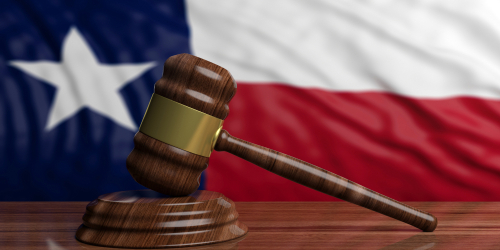'Iconathon' held by the PTO to create symbols for IP concepts
![]()
Photograph by Jay Premack/USPTO
By now, most people are familiar with the symbols that indicate copyrights and registered trademarks. But how do you design symbols for other intellectual property concepts that will become as universally accessible?
If you are the U.S. Patent and Trademark Office, you open up your doors to the general public for an “iconathon.” In August, the normally buttoned-up federal agency invited the interested public inside to help brainstorm, design and create symbols that could eventually become as recognized as © and ®.
“Icons are used to quickly convey concepts and topics to people from a broad range of backgrounds, helping to overcome language and cultural communications barriers,” Russell Slifer, the deputy undersecretary of commerce for intellectual property and the deputy director of the Patent and Trademark Office, told the event’s participants.
“Initially we envision that the icons are going to be used on our website and other creative ways to make the concepts of intellectual property more readily understood by everyone, everywhere,” Slifer added.
To facilitate the workshop, the PTO brought in the Noun Project, a Culver City, California-based organization that promotes the development of symbols for all sorts of endeavors. Worldwide contributors can upload icons, or the organization sometimes works with groups on iconathons targeted at a specific area.
“Words divide, but symbols unite,” said Edward Boatman, the co-founder and head of community of the Noun Project. “Symbols can communicate an idea in the blink of an eye.”
The project has organized more than 150,000 icons, which can be downloaded and used free of charge. It has worked on iconathons with groups such as the American Red Cross, the New York Times, the MIT Media Lab and Wikipedia.
Photograph by Jay Premack/USPTO
For the PTO Iconathon, the to-do list included some concepts that were a bit more challenging than “donate blood here.”
Some 35 people divided into teams of five or six to tackle concepts such as “trade secret,” “infringement” and “counterfeit.” Some concepts were part of groups, such as “patent (pending),” “patent (design),” “patent (utility)” and “patent (plant).”
Some of the more challenging ideas on the agency’s list were “pro se,” “pro bono” and “prior art.”
Most, though not all, of the participants were artistically inclined.
“Some of these are daunting, because the concepts are so abstract,” said Roxanne Bradley-Tate, who took time off from her job as a senior art director at a hotel chain to take part in the event. “I love icons and logos. I generally work solo, so it’s nice to be in a collaborative environment.”
At the end of the day, participants voted for their favorites for each concept. Boatman noted that the Noun Project’s experts would work with some of the winning designs to make sure they were still understandable when reduced to a relatively small size. (All of the project’s icons are in black and white.)
Thomas A. Beach, a senior adviser at the PTO, said the agency was pleased with the event. “It was very engaging,” Beach said. He noted that one key metric of success for all icons is how well they are embraced and used. “That has more to do with how well they are designed than [someone] saying you have to use them.”
This article originally appeared in the November 2015 issue of the ABA Journal with this headline: “Iconic: The PTO hosts an ‘iconathon’ to create IP symbols.”



